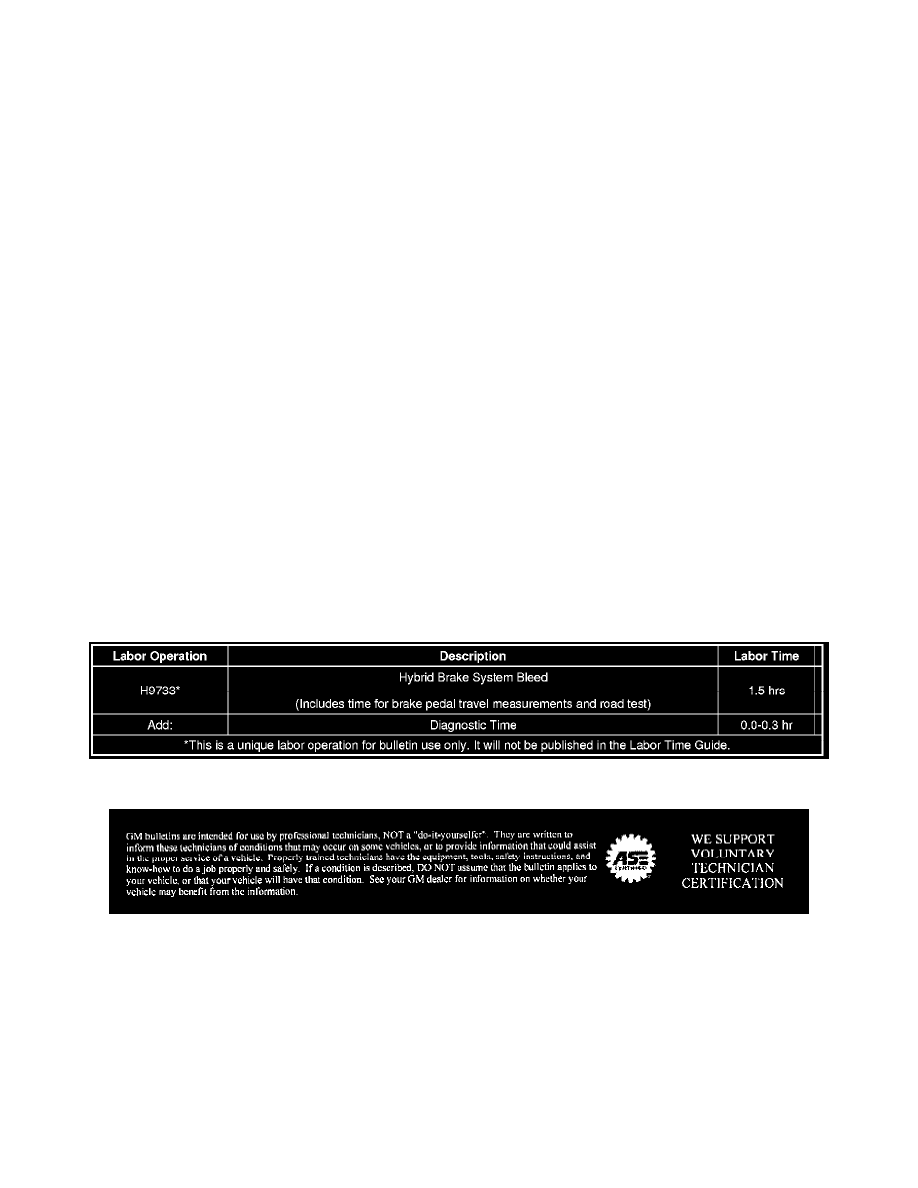Tahoe 2WD V8-6.0L Hybrid (2008)

10. Compute the average of the first and second measurements recorded during the brake applies.
Specification
Maximum brake master cylinder (BMC) primary piston travel, (measured with the ignition ON, engine OFF, brake modulator and HPA depressurized,
and the brakes cool), at a brake pedal apply force of 5,000 kPa (725 psi) : 18 mm (0.71 in).
Warning
It is recommended that you use the J-29532-A pressure bleeder or a diaphragm type (ball bleeder) which is capable of delivering 200 kPa (30 psi) for
the bleed procedure. Follow and read all the directions on the Tech 2(R) for completing the Automated Bleed procedure and do every step during the
bleed procedure. If you miss a step, you must start over. The EBCM Relearn will occur during the automated brake bleed procedure, so make sure you
maintain battery voltage during the entire procedure. Failure to provide a constant 200 kPa (30 psi) may cause air to be trapped in the brake system
and may cause brake performance problems or DTCs to occur. Tool J-29532-A has been tested extensively on this application and has proven to
provide the necessary pressure and volume of brake fluid. Vacuum bleeding and other brake bleeding tools are NOT acceptable for this procedure.
-
If the brake pedal travel is greater than 18 mm (0.71 in), perform the following steps:
1. Inspect the brake system for leaks and visual damage. Repair or replace the components as necessary.
2. Perform the automated brake bleed procedure. Refer to Antilock Brake System Automated Bleed Procedure-Hybrid (HP2) in SI.
-
If the brake pedal feels spongy and/or the brake pedal travel is still excessive after performing the automated brake bleed procedure and no
external brake fluid leaks or damage were found, inspect the hydraulic brake system for internal leaks, etc. Refer to Hydraulic Brake System
Diagnosis (Two-mode Hybrid) in SI.
11. Clear all the codes from the modules.
12. Start the vehicle and allow the brake system to pressurize.
13. Drive the vehicle up to 32 km/h (20 mph) and perform several heavy brake stops.
14. Verify that the condition has been corrected.
Warranty Information
For vehicles repaired under warranty, use the table.
Disclaimer
